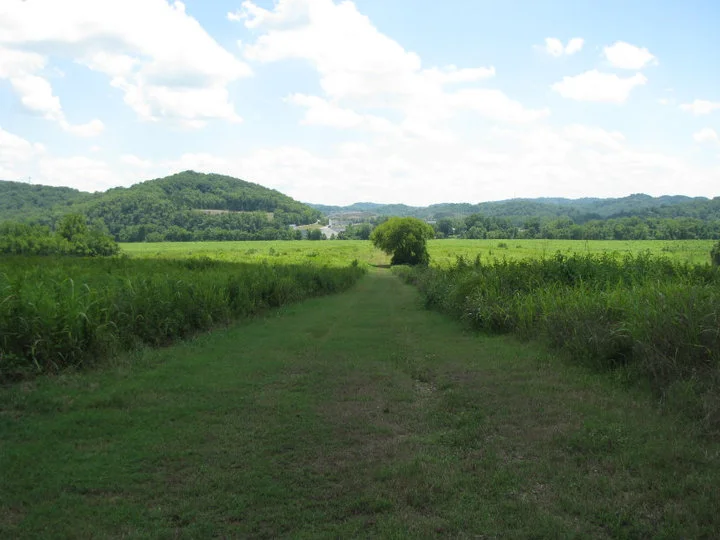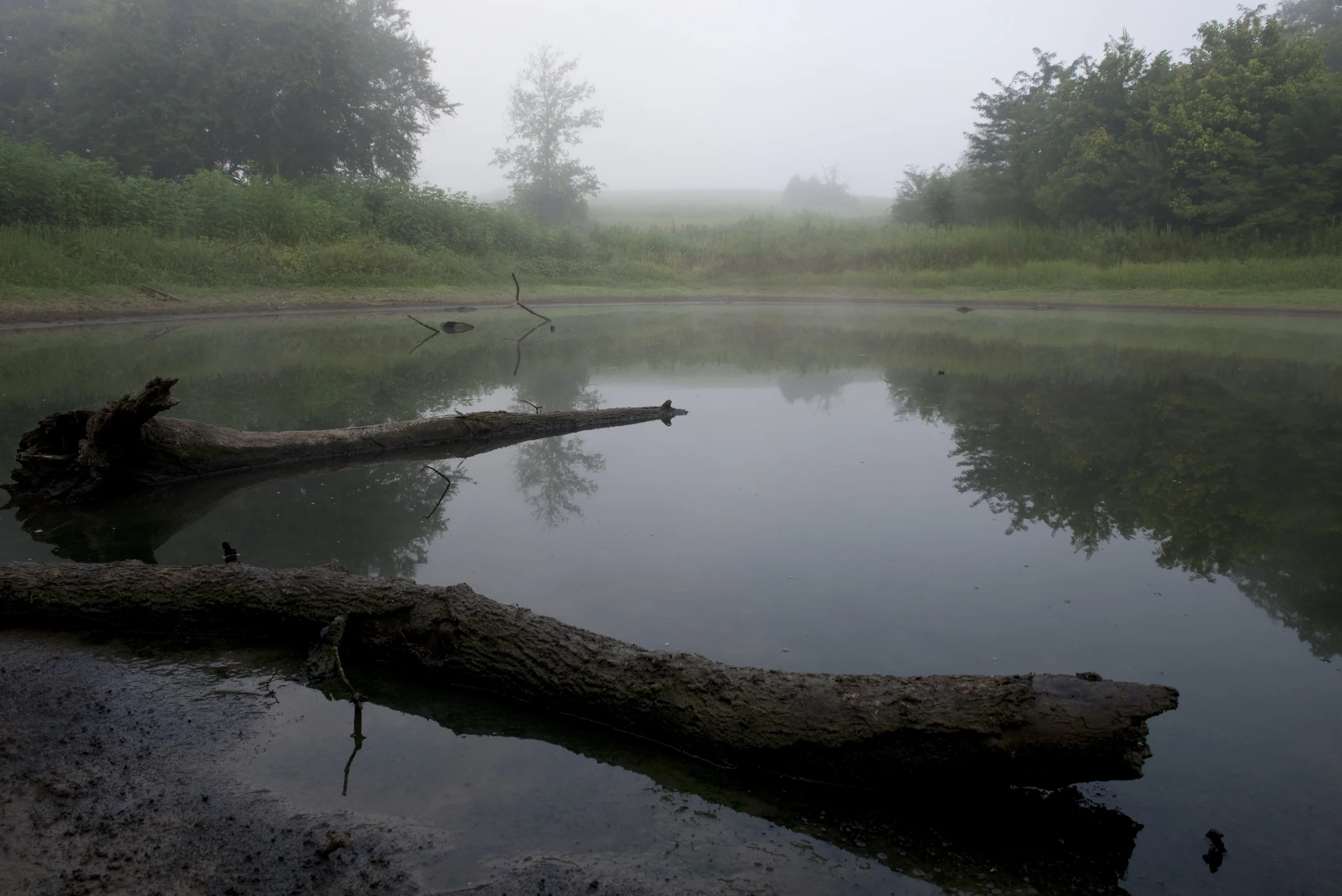Beaman Park
Located in northwest Nashville near Joelton. This wild and rugged land is a unique treasure in Nashville’s park system and features a Highland Rim forest type, unique plant associations and species, and a rugged landscape with steep slopes, narrow hollows, and streams and waterfalls. Beaman Park is a rugged sanctuary of unique natural beauty where visitors can experience a peaceful connection with nature, view and learn about plants and wildlife, and realize the importance of preserving the natural world for future generations.
Uncommon & Rare Plants and Animals at Beaman Park:
Plants: Beaman Park is home to a rare plant community type, the woodland barrens, which contains post oak and native perennial grasses. Other rare plants that can be found in the park are below:
Eggert’s Sunflower – Once listed as Federally Endangered (but since delisted), the Eggert’s sunflower is the most notable species found at BeamanPark and it appears on the park’s brochure.
Yellow Lady’s Slipper – This orchid is rare for Middle Tennessee
Michigan Lily – This species is listed as threatened in Tennessee.
Shortleaf Pine – This pine tree is not common in this part of the state.
Butternut (White Walnut) – Several examples of this rapidly declining species can be found in the park.
Animals:
Timber Rattlesnake – Beaman’s rugged and rocky hills harbor timber rattlers, a species that has experienced population declines in this area due to habitat loss.
Wood Thrush – Once common, the wood thrush requires large unbroken tracts of forest to survive. Its melodic song can still be heard at Beaman Park.
The Louisiana Waterthrush
Ovenbird
Worm-Eating Warbler
Yellow-Throated Warbler
Kentucky Warbler
Northern Parula
Yellow-Throated Vireo
Bells Bend Park
Bells Bend park is Located in western Davidson County, this park takes its name from a peaceful arc of the Cumberland River known as Bells Bend. This rural preserve is defined by its agricultural history, its bountiful opportunities for viewing wildlife, and a landscape shaped by the river. This 808 acre pastoral park opened to the public in 2007 and supports habitat for plants, migratory birds and other wildlife. Bells Bend Park offers Nashville residents and visitors access to a unique three-fold experience: cultivating knowledge of the natural world, developing outdoor recreation skills, and understanding cultural impacts upon the land.
Bells Bend Outdoor Center is 808 acres of pastoral, agricultural land bordered by the Cumberland River. Over six miles of trails feature a rural landscape with gently rolling hill views across open fields and scattered forest. Sun-loving summer and fall wildflowers predominate the field flora while several species of oak and hickory represent the hardwood forest. Other tree and shrub species include Yellow Buckeye, Buttonbush, Green Ash, Rough-leaf Dogwood, Fragrant Sumac, Osage Orange, and Honey Locust.
Wildlife viewing opportunities are frequent. Deer, coyote, quail, turkey, and raccoons are often spotted utilizing the mowed trails. Migratory birds, uncommon field species such as Henslow’s Sparrow and Dickcissel, and raptors such as Northern Harriers are often observed by those with an interest in birding. The combination of unique nature experiences and a long, interesting cultural history including Paleo hunters, Civil War, and historic farming makes Bells Bend diverse in many ways. The park is located northwest of downtown Nashville. The best birding site is directly behind the outdoor center.
To view Henslow’s Sparrow, Dickcissel, Orchard Oriole, Northern Bobwhite, Blue Grosbeak, and Willow Flycatcher in the spring, walk between the outdoor center to just below the barn. The ecotone where the fields meet the fencerows often have Gray Catbird, Indigo Bunting, Eastern Wood Pewee, American Woodcock, Yellow-billed Cuckoo, and Red-bellied Woodpecker. In the middle of the fields, remnants of last year’s tall wildflower stems provide perches for sparrows, Blue Grosbeaks, Yellow-breasted Chats, and Red-winged Blackbirds.
After hiking about a mile to a gravel path along the river, birds often encountered include Bald Eagle, Prothonotary Warbler, and Belted Kingfisher. In the winter, Whooping Cranes that have been spending the season nearby can sometimes be seen flying above the water. The proposed shorebird ponds are located beyond this area nearer to the Harpeth Valley Utility district.
Hiking the loop beyond the gate at the Poplar Creek trailhead leads to the large cultural history area and goes along the area for the proposed mountain bike trail. A metro Greenways trail will be along the river in the future.
Rare or Uncommon Species of Bells Bend
Henslow’s Sparrow
Bobwhite Quail
Grasshopper Sparrow
American Bald Eagle
LeConte Sparrrow
Dickcissel
American Woodcock
Flora & Fauna
The Beaman Park to Bells Bend conservation area contains a wide range of ecosystems, many of them broad swaths of forests barely intersected by roads and inhabited mostly by wildlife. Other ecosystems, such as rolling pastures, riparian lowlands, and cool moist caves, also support diverse habitats with abundant and varied species of plant and animal life. Although species diversity surveys have not been completed for the study area at large, the two large Metro Parks, Beaman Park and Bells Bend Park, are beginning to compile species lists in these first years of operation. Looking at these two parks is fitting, as they anchor the two ends of the conservation corridor. Preliminary information on both the plant and animal diversity of these two parks is exciting. Each new exploration by park staff members and area naturalists reveals what residents of Scottsboro have long known; the forests, wetlands, streams, and pastures of northern Scottsboro and Bells Bend team with a dizzying variety of animals and plants. While the diversity of habitats and wildlife is already a precious resource, it is made even more so by its close proximity to downtown Nashville.
For more information see Chapter 8 - From to Forest to Field pages 97-112 in Beaman Park to Bells Bend: A Community Project


